
Organic Link Building: How to Create A Natural Backlink Profile
In the last ten years, organic link building has risen to prominence. Search engines like Google have clearly stated that these links have the greatest impact on rankings.
Long gone are the days of simply paying for a ton of links to be posted on loads of poor quality websites.
Instead, search engines like to see backlinks built because the website owner thinks they offer value to their audience.
That all sounds great, but it raises several questions for webmasters seeking to boost their rankings:
🤔 What does an organic link look like?
🤔 What is organic link building?
🤔 How do I build organic links?
This article aims to answer these questions and explain how you can increase your website’s rankings and traffic by building high-quality organic backlinks to it.
What is Organic Link Building?
Organic link building is when you earn backlinks from other websites without resorting to paying or exchanging backlinks. It’s sometimes called natural link building or earning links.
However, the definition of “organic” is blurry and means different things to different people. For example, will paying an agency to build links for you result in organic backlinks?
Most people in the SEO industry generally agree that organic backlinks fulfill the following criteria:
✅ Complies with Google guidelines: Google says that any activity aimed at manipulating search engine results contravenes its Search Essentials guidelines.
✅ Offer value: Your content should focus on providing value to readers. The link should be secondary.
✅ Relevant: Organic links usually mean that the linking websites and their content are relevant to each other. For example, you would expect a health blogger to list the top ten exercise apps, but maybe not the top 10 power drills.
✅ Not purchased or exchanged: Buy or exchanging links is common practice these days. It is perfectly safe and can result in high quality backlinks, as long as it is done correctly. However, links cannot be defined as organic if you have paid for or exchanged them.
✅ Not built using automation or AI: Many dodgy SEOs use AI or automation to build backlinks en mass. Not only is this against Google’s guidelines, but it usually results in poor quality links.
💡 Variety: The Sign of Organic Backlinks
There’s a lot of focus in SEO circles on building in-content backlinks from high authority websites, with relevant anchor text.
But the truth is, an organic backlink profile usually has a variety of different link types from different sources, with various anchor text formats.
If you’re building hundreds of similar backlinks, then it’s unlikely your backlink profile appears organic to Google.
What Are the Benefits of Organic Link Building?
Organic link building brings several benefits, including:
Improved SEO
Because search engines prefer natural backlink profiles, organic link building often results in the following:
✔️ Increased website authority
✔️ Ranking higher in search
✔️ Increased traffic
Organic backlinks tend to last longer than those that are purchased or gained as part of an exchange. This is because they usually point to high-quality, evergreen content.
Lower cost
Although organic link building often takes more time and effort than other link building approaches, it can be cheaper, as you rarely pay for links.
This isn’t always the case, as creating content that people want to link to can be expensive. However, you’ll probably still get better value for money, as the links you build will be of greater quality.
Better brand perception
Organic backlinks are based on high-quality content, genuine relationships, and relevance.
These factors all contribute to your brand value, reflecting its credibility and professionalism.
Conversely, your brand will be negatively impacted if your website has many spammy comment backlinks or links from dodgy gambling sites.
How to Build Organic Backlinks
This section lists the techniques that best lend themselves to organic link building.
High-quality content
One of the main reasons people link to content is because it’s useful in some way, other reasons may include:
The content includes guidance, advice or information that is relevant to their audience.
The content substantiates what they are saying.
It allows the reader to learn more about a subject.
It shows them products or services that they may wish to buy.
If you publish content that’s genuinely valuable, then over time, it is likely to generate backlinks.
Below, we’ve summarized what good content looks like. Many of these factors won’t just help you attract organic backlinks—they will also help your content rank higher on search engines for relevant keywords.
Good content is:
✅ Expert-written: You should produce content based on your industry expertise. For example, if you’re a nutritionist, you should write articles about good eating habits and meal prep.
People would be less likely to link to you if you blog about the latest tech products. Why? Because this isn’t your area of expertise and so people don’t trust your opinion as much.
Essentially, you’re giving some of your expertise away for free. This article you are reading is a perfect example!
✅ Professionally produced: People won’t trust content so much if it seems amateurish. You should hire professional writers and graphic designers to help produce content. This will ensure it is easy to read and is free of mistakes.
✅ Provides original insight: Producing content similar to everyone else’s could get you some links, especially if it’s better written. But to really get noticed, you need to provide something new.
There are tons of ways to provide original insights. Examples include:
💡 Original research.
💡 Offering your opinion on a topic.
💡 A new perspective.
💡 Providing new examples or case studies.
💡 Revealing something newsworthy.
✅ Contains multimedia elements: People’s brains can process visual information 60,000 times faster than text. Using video, images and other multimedia elements makes your content easier to digest and allows you to communicate your point faster. Readers find it more engaging and are likely to stay on the page longer.
✅ Goes into depth: Surface-level information isn’t as useful as thorough, in-depth content. Make sure you go into enough detail so that your content is genuinely useful to readers.
How to come up with content ideas
Here’s a step-by-step guide to your first content campaign:
1. Come up with ideas
Begin by brainstorming subjects that you think your audience will be interested in. For example, if you are a nutritionist, you may have some customers or online followers who are vegan.
You therefore might decide that a series of guides covering vegan nutrition would interest your audience.
Use keyword tools
Once you’ve written down all your ideas, you can turn to online tools to get more. SEO software Ahrefs includes a keyword research tool that suggests keyword ideas.
Type a broad keyword into the keyword explorer. In this case, let’s use “vegan nutrition”.
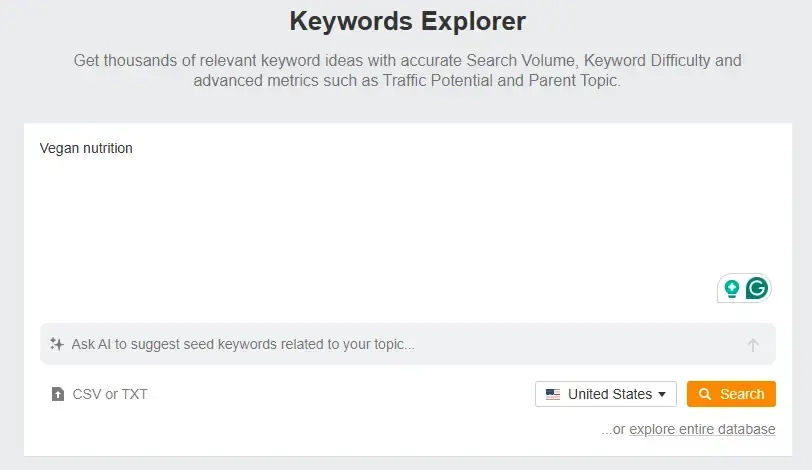
This brings up a ton of information on the keyword, including how difficult it is to rank for, how much traffic it gets and which website currently ranks in the top 10.
For now, however, we’re interested in the section titled “Keyword ideas”. This section suggests keywords in four fields:
💡 Terms match: A list of terms containing the target keyword.
💡 Questions: The target keyword phrased as questions.
💡 Also rank for: This looks at the top ranking pages for your target keywords and shows you what other keywords they rank for.
💡 Also talk about: Similarly, this looks at the top ranking pages for your target keyword. But this time, it shows common keywords and phrases.
For each keyword, you can scroll down to the SERP overview to see the top 10 ranking pages. Take a look at the “Backlinks” and “Domains” columns. This indicates how many backlinks the content gets and how many domains link to it.
Look for articles that draw a lot of backlinks and try to understand what they are about and if you could create your own version.
For example, this article on evidence-based nutrition recommendations has drawn thousands of backlinks. If you could carry out your own research, or find new studies, then you might be able to achieve the same success.

Add any keywords that you think would make good content ideas to your list. Make sure to note the number of potential backlinks and the search volume for each.
Use site explorer
Another useful Ahrefs tool is its site explorer. One of the things it allows you to do is see all the links pointing at your competitors’ sites.
This allows you to see what content is in demand. You can then create your own, better version and steal some of the attention in future.
To do this, click on the “Site Explorer” tab in the Ahrefs top menu bar and type your competitor’s domain into the search bar.

This brings up a ton of information on the website, including its authority rating (DR), its traffic and how many backlinks it has.
Click on the “Best by links” tab under “Pages” in the left menu bar.
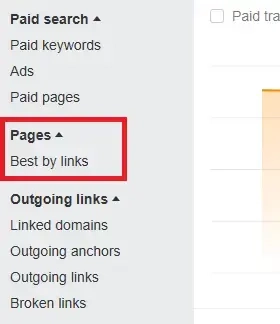
This puts all the website’s pages in order of the number of links they get.
Make sure the “Dofollow” tab is checked at the top. Some links include an HTML attribute called “Nofollow” which stops them from passing on link juice (click on the link to learn more about what this is!). Nofollow backlinks are generally less valuable than dofollow.
Make sure to order the list by referring domains, not by links to page. This is because the number of referring domains is more important than the sheer number of links—in other words, it’s better to get 1 link each from 10 domains, rather than 10 links from 1 domain.
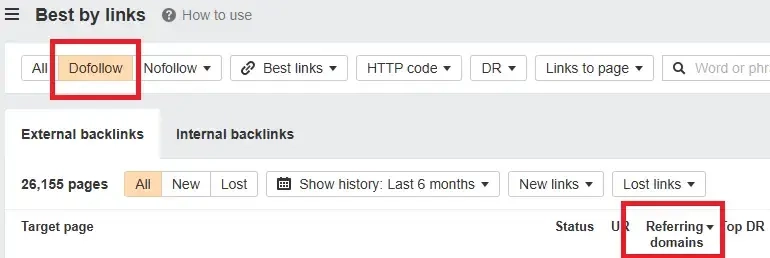
Here’s a good example that we found on Vegan.com. It’s an article about vegan makeup that has 116 backlinks from 21 referring domains.
This shows there is some interest in the topic. But upon closer inspection, the article is very limited and doesn’t provide much useful information. Your vegan website could easily go into depth about:
Which products are vegan.
Which products should be avoided.
Which are the best vegan makeup products.
Why are they good?
Who do they suit?
Are there any differences that consumers need to be aware of?
2. Prioritize keywords
Next, add all your keywords and article ideas into a spreadsheet.
Prioritize the ones that you think could get the most backlinks. You should also prioritize the ones that get high search traffic, as this also indicates demand.
Use this priority list to populate an editorial calendar. Plan to write and publish content on a regular basis.
To begin with, this could be around one article per month. If that proves too difficult or easy, then plan to increase or reduce the cadence accordingly.
3. Create content
Be sure to implement a strict production process, including quality control and planning. A typical editorial project might include:
Planning
Writing
Creating multimedia elements
Proofreading/quality check
Approvals
Publishing
4. Share your content
The final stage of the content production process is ensuring people know it exists. Otherwise, how else will they link to it?
Post your content on your blog and share links to it on social media, forums and other relevant platforms.
You can also contact partners and other relevant websites in your niche and suggest that they link to it too. This is called outreach, and we’ll explain it in greater detail later in the article.
Free Tools and Apps
Content is all about sharing your expertise. But what if you shared some of your actual services for free too?
For example, Hubspot has a page of free business tools.
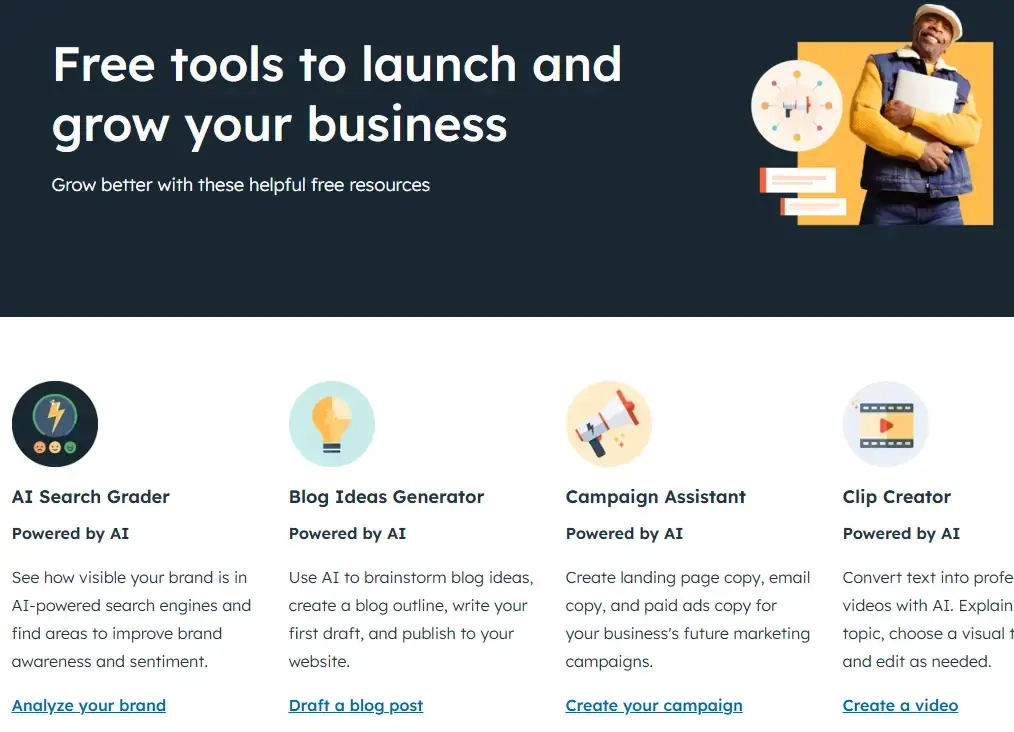
And unsurprisingly, these hugely valuable resources have generated over 30,000 backlinks!
That’s all very well for a giant company like Hubspot. But how can everyday businesses do the same?
The best place to begin is by looking at the tools you already provide and then decide how you can give some of it away for free.
For example, Paperless Pipeline provides software for real estate businesses. This includes a commission calculator that makes it much easier to make complex commission payments.
They have created a simplified version of this, which they give free access to on their website.
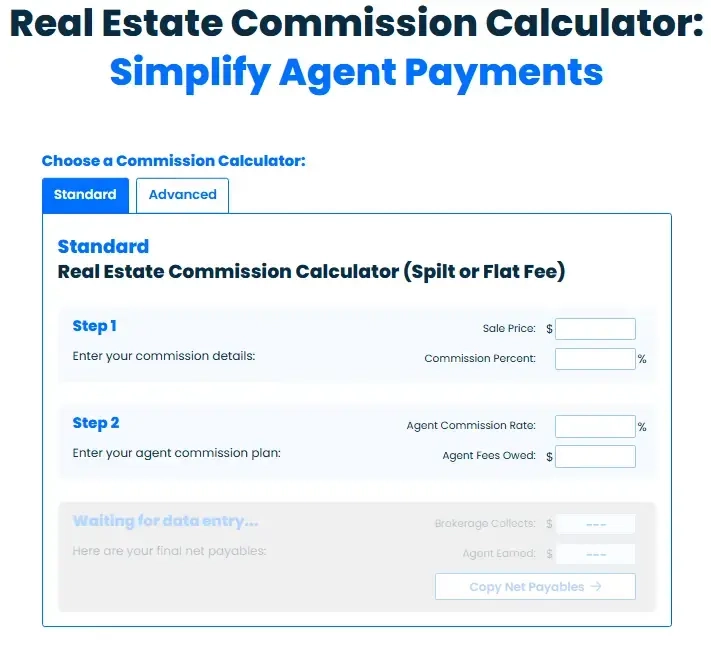
Real estate professionals are likely to find this incredibly useful and will want to share it with others in the sector.
If you don’t have technical expertise, then creating apps like these can seem overwhelming. However, there are several no-code app builders that make creating simple apps relatively straightforward.
Examples include:
Build Relationships
Organic backlinks are based on real relationships—not financial transactions or link schemes.
What do we mean by this?
Well, most webmasters know the impact that backlinks can have on rankings. Therefore, if a company they don’t know contacts them and suggests linking to their content, they assume it’s a link-building strategy and often ask for money in exchange (or they ignore it).
Organic backlinks are different. They often happen because webmasters know and trust the brand they link to. This is often because they have worked together in the past and built a relationship.
In this example, HR consultant Sarah Birkenshaw has appeared on a Q&A video for recruiters Key Appointments. In it, Sarah provides her insights on the importance of employee retention.
Because she shows her sector expertise, Key Appointments will be more likely to partner with Sarah and her company again in future—and perhaps provide a backlink too.
Here are some tips for building relationships:
Follow the blogger, influencer or company on social media.
Respond to their posts and add value.
Share their content.
Email them and tell them you like what they do.
Try to meet them—this could be at an industry event, by inviting them onto your podcast (if you have one!) or simply asking to meet for a coffee.
The importance of outreach
Outreach is when you contact other webmasters to suggest they link to you. If you’ve already built a relationship, then this bit is more straightforward.
But if you’re contacting them cold, you’ll need to ensure your message gets their attention.
Here are some tips for getting this right:
✅ Write an engaging subject line: Keep it short and promise the recipient something useful. Let’s say you have carried out some original research:
❌ Bad subject line: Please link to my incredibly useful research.
✔️ Good subject line: New stats reveal unexpected industry shift.
✅ Briefly introduce yourself: Explain who you are and your credentials. For example, you might say, “I’ve been a professional nutritionist for 10 years and have authored two books on the subject.” Linking to your work and credentials will help improve their trust in you.
✅ Personalize the email: Use the person’s name, but also show you are familiar with their work. For example, you could mention a recent blog they wrote or an award they won.
✅ Provide a clear call to action: Be clear on what action you’d like the blogger to take. For example, you might say: “I think your audience would be interested in our research. I’d love it if you could share it with them in one of your blog posts. What information do you need from me to make this happen?”
Read our article to learn more about outreach campaigns and building relationships.
PR Link Building
Building relationships with other bloggers will get you some excellent organic links. But the most powerful backlinks come from media organizations.
Think news outlets like CNN and the New York Times. These are well-known brands and well-respected websites, and readers and search engines trust them.
Here’s a good example where a nutritionist has been quoted on the UK news website Mirror.com on the importance of diet for good eye health.
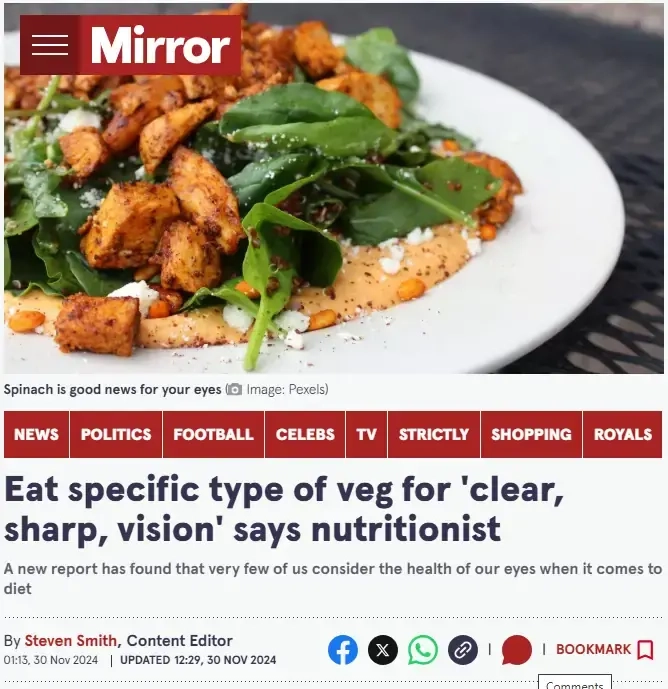
The Mirror is a DR 90 website, so this is an incredibly valuable link.
But building links with these organizations is tough. Journalists are busy people, and they often only cover your story if it’s super relevant to their readers.
That’s why building relationships with journalists is a critical first step. If they are aware of you and your expertise, then there’s a chance they’ll ask to quote you the next time a relevant story comes up.
Here are some tips for building good relationships with journalists:
✅ Originality is key: Journalists want new information, so try to offer them something fresh. This could be new data, an expert view on an emerging story or simply new facts.
✅ Highlight the benefit for readers: Emphasize how your content will interest the journalist’s audience. For example, if you have researched vegan diets, you might highlight the fact that there is a lack of data on the subject.
✅ Be brief: When pitching a story to a journalist, provide enough information for them to write a short story and invite them to contact you for more details. Going back to our research example, they probably wouldn’t have time to read the entire report in-depth and would often prefer you send them a summary of the results.
💡 Let journalists come to you
A number of online platforms exist to connect journalists with subject matter experts like you. Examples include Qwoted and Featured.
These platforms all work slightly differently, but in general, a publisher posts a question and then experts pitch a response.
The journalists can then choose which responses they like best and publish them—often with a backlink.
These platforms tend to be an easier way to generate press links than media outreach campaigns.
Awards
Everyone loves being told they are great! If your business wins an award, what’s the first thing you do? Tell everyone about it.
That’s why awards are a great source of organic backlinks.
Here’s a case in point. SME News runs the Northern Enterprise Awards. And here’s one of the winners excitedly telling their readers about it on their blog—notice it includes a backlink:

And that’s just one company. All the other winners have likely linked to it too.
However, launching awards like this is a lot of work. You’ll need to consider:
How will you generate interest in the awards?
Who will manage the entries?
Who will judge it?
Will you have an awards ceremony and if so, where will it take place?
Will you give out physical awards?
If this sounds like too much work, then another alternative is to curate a “best of” list. This will draw backlinks not only from the businesses proud to have been featured but also from people sharing your round-up of quality businesses.
Here’s a good example from Condé Nast Traveller, listing the 75 best restaurants in London.
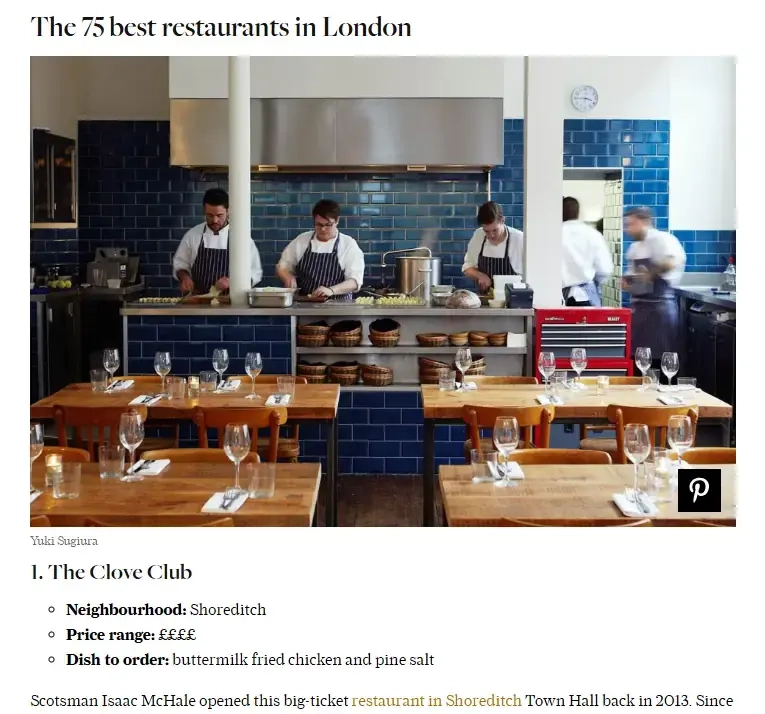
Unsurprisingly, this has generated around 2,000 backlinks from 173 domains.

Broken Link Building
Our final organic link building technique is broken link building. This is when you find faulty links on other websites and offer your content as a replacement.
The most common reason for a broken link is that the page it leads to has been moved or taken down. The user experiences this as a 404 page.
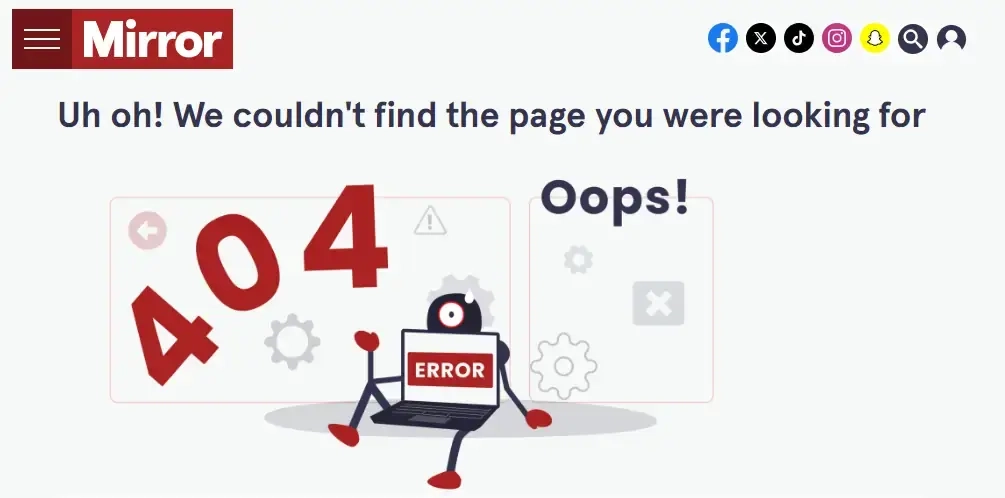
Broken links are bad for websites for multiple reasons. They lower their rankings, create a poorer user experience and generally make a website feel unprofessional.
As a result, webmasters are usually happy to replace a broken link with yours.
Broken link building isn’t easy, though. It’ll take you a long time to search industry websites to find one.
A faster way is to use Ahrefs’ free broken link checker. Simply type a domain name into the search bar and it will bring up a list of pages with broken links.
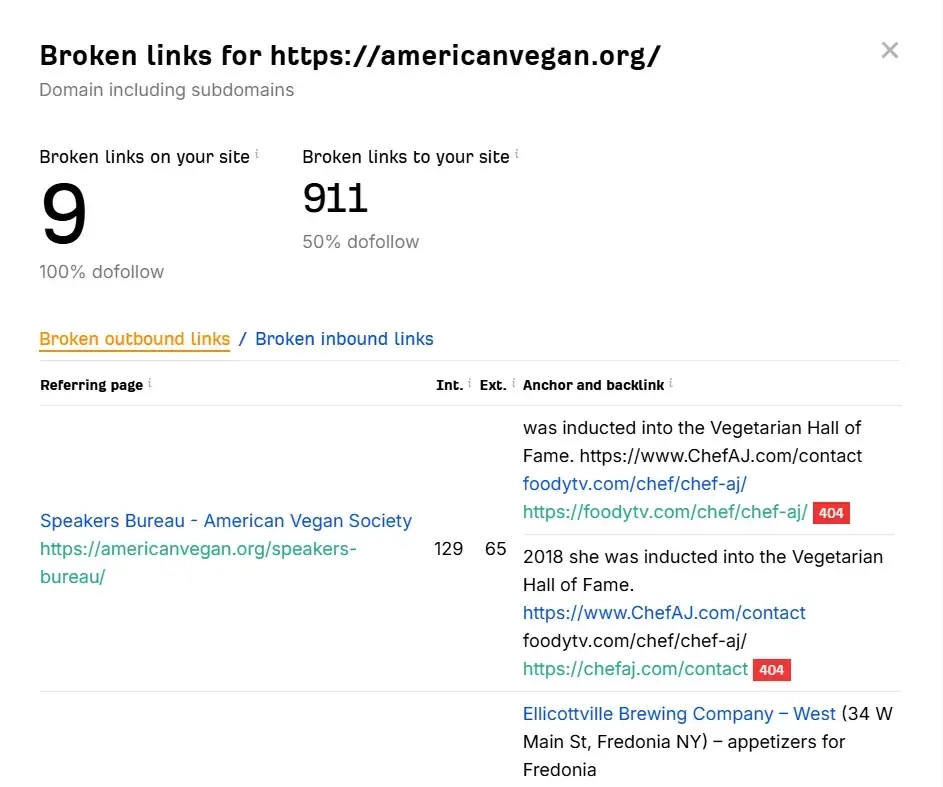
Take a look at the links and decide:
If the subjects match your expertise.
If you have existing content to replace the link with.
If the link opportunity matches your expertise, but you don’t have content that matches it, then consider creating new content.
Then, it’s simply a case of reaching out to the website owner and suggesting they link to you.
Need Help Building Organic Backlinks? Get Expert Support from Linkbuilder.io
Organic link building results in a solid backlink profile that increases rankings, website traffic and brand equity.
But they can be time and resource-intensive. Finding opportunities, creating high-quality content and building relationships is all hard work, and getting it right requires expertise and experience.
That’s where Linkbuilder.io comes in. Our team of SEO strategists, link builders and writers can help you generate long-lasting, 100% ethically built backlinks.
Check these case studies, where we helped two major brands build hundreds of high-quality backlinks, without paying for any of them.
Book a call today to find out how we can do the same for your business.

